by Niki Crawson | May 20, 2022
Summer is right around the corner. As much as we all love the sunshine feeling on our face and body, too much of a good thing can be harmful! It is always important to remember our family’s well-being, take responsibility for our personal safety, and make healthy decisions, even while having a fun time. Here are some short sun safety reminders to make your summer a fun and enjoyable experience for you and your family members!
SUN SAFETY
Plan Your Day Around the Clock
The sun shares its most harmful rays in the middle of the day so plan this time for indoor use. The sun’s rays are most harmful between the hours of 10 AM and 4 PM so make outdoor time in the early morning or early evening when it is less intense. This also keeps your food at safer temperatures as well so your ice (or you) won’t melt as fast.
Protect Your Body
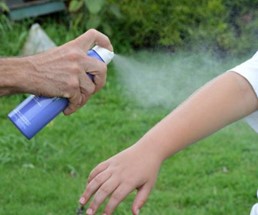
Look for SPF 30 or higher sunscreen.
One of the easiest defenses against the sun is sometimes one of the most forgotten, sunscreen! Be sure to lather up in sunscreen BEFORE you go outside. The American Academy of Dermatology recommends liberally applying a sunscreen that is at least SPF 30 or higher, as these formulas will block UVA and UVB rays. Be sure to apply at least 30 minutes prior to going outside. Once outside, continue to apply sunscreen every two hours or after swimming. Not sure what kind of sunscreen blocks UVA and UVB rays? Look for a sunscreen that is SPF 30 or higher with the ingredients zinc oxide or titanium dioxide as these ingredients will do the job. Remember to coat your ears, neck, tops of feet, etc.
Remember to grab your sunglasses too! Your eyeballs are just as sensitive as your skin so blocking UVA and UBA rays from your eyes are important to. Fashionable sunglasses are great if you are into that but being able to protect your eyes is the goal.
Limit Time

Remember to keep your pets cool too!
Most everyone enjoys getting outside this time of year to soak up some sunshine and enjoy the beautiful day. In fact, it’s true that some amount of sunlight is healthy for your body and mind. However, as we know all too well sometimes, too much exposure can be detrimental and lead to sunburn, heat exhaustion and more. Thus, it is a good idea to find balance by setting a time limit on sun exposure, if possible. If time slips past you because you and your family are having too much fun, set an alarm as a friendly reminder. Make this your “shade time” for a water break, game of cards, or a brief nap. Be sure to always have an umbrella or tent on hand in case no shade is available.
Hydrate
It is very easy to get dehydrated in the summertime. Drink water throughout the day. Don’t wait until you get hot and thirsty. Drink water to maintain your hydration before it is depleted. This will help avoid those nasty summer headaches and tummy aches. Taking your pet with you? Don’t forget Fido’s water bowl too!
4-H PROGRAMMING
UV Bead Activity
Looking for a really cool lesson to teach your children about the risk factors associated with sun exposure and UV rays? Check out this 4-H activity 4-H + Me = Health: Sun Safety from Minnesota Extension Service’s Exploring Your Body, Helper’s Guide. In this activity, children can make their own beaded bracelets that change colors when exposed to UV light. This is a great way for children to understand UV light, cloud coverage, sunscreen SPFs and more!
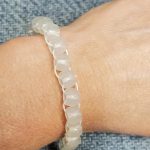
UV Beads with no sun exposure.
4-H has plenty of educational programming, both outdoors and indoors, to keep your children engaged this summer! From gardening to robots, archery to grilling, 4-H has something for everyone. If you are looking for fun, educational activities during the summer while maintaining a safe environment for your child, please contact your local UF IFAS County Extension Office, or visit http://florida4h.org
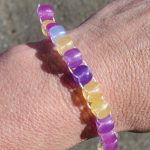
UV Beads with sun exposure.
by Heather Kent | Jul 15, 2016
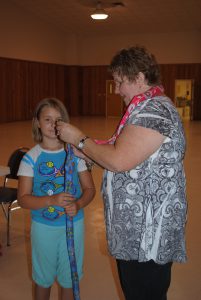
These DIY neck coolers are great to help youth learn about sewing AND science!
Even though it is not yet August, the Florida heat is sweltering. Staying hydrated is key, but you can also stay comfortable outdoors with a neck cooler. The neck cooler helps cool the blood pumping to your head and is a very effective way to prevent heatstroke when you need to be outdoors. This project is also a great beginner sewing project for 4-Hers and volunteers! This project is from the online Maker Movement Magazine. It is also a fun way to tie in the science of hydro-gels polymers. Hydro-gel polymers are long molecule chains that absorb water efficiently and easily. They are used in agriculture to prevent soil erosion, conserve water and even soak up toxic spills from our environment. A great extension of this project would be the Helpful Hydro-gel Experiment by Steve Spangler- the 2008 National 4-H Youth Science Day Experiment.
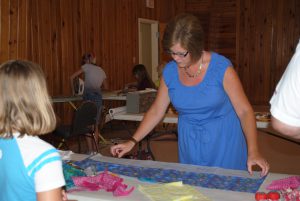
Youth are learning how to measure and cut fabric for their neck coolers with Monica Brinkley, County Extension Director and Agent in Liberty County
Here’s what you need to make your neck cooler:
- 1 piece of fabric measuring 36 inches long and 5 inches wide
- 1 tsp of hydro-gels (found in the gardening supply section of your local store)
- Thread
- Scissors
- Sewing needle (if sewing by hand) or sewing machine
- Iron and ironing board
Fold the piece of fabric lengthwise (right sides together) and press to form a tube. Stitch a 1/2 inch seam across one end and down the length of the fabric. Turn the tube right-side out and press. From the stitched end of the tube, measure 4 1/2 inches and stitch a seam across to make a pocket for the hydro-gels. On the open end of the tube, use a funnel to pour 1 tsp of dry hydro-gel beads inside the pocket. Next, fold the ends of the open tube inside and stitch securely. To activate the gels, simply soak in cool water. Tie around your neck and stay cool!
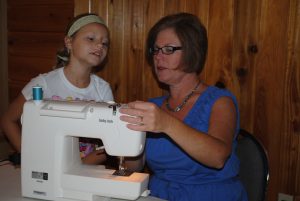
Neck coolers can be sewn by hand or with a sewing machine
Other helpful UF IFAS Extension resources:
Hydration Myths
Hydration in Hot Working Environments
Hydration Safety
4-H Sewing Project Info
by Heather Kent | Jun 23, 2021
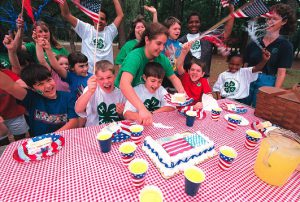
Photo credit: UF IFAS Photography
The 4th of July is one of my favorite holidays! Growing up it was the time that my family (even those distant cousins) gathered together for a weekend of fun, food, and fireworks. There is nothing worse than spending your holiday sick or injured, so we have complied plenty of resources to help you plan a celebration that is fun, but also keeps everyone safe:
We hope you have a fabulous 4th of July and that these tips and resources add to the fun!
by John Wells | Jul 1, 2011
 Sherri Kraeft
Sherri Kraeft
Wakulla County 4-H Agent
Wakulla County 4-H
84 Cedar Avenue
Crawfordville, FL 32327
sjkraeft@ufl.edu
850-926-3931
850-926-8789
As summer quickly is upon us, we are all looking forward to summer camps and cookouts, fun in the sun and ways to spend time with our families and fellow 4-Hers. In this issue of the newsletter, we are giving volunteers, parents and others creative ideas for how to have fun this summer with 4-H. Even though each county program differs in what they offer during the summer months, we all want to stay connected and active throughout the summer and into the fall. While it is getting hotter by the minute, we in Wakulla County 4-H are excited to be offering four new day camping programs and we have just conducted a successful fundraiser called Jam 4 Camp. Be sure to read all about how to involve teen counselors and don’t miss the information on how to teach science without actually being a scientist; really, it’s easy!
While you enjoy your summer activities, also don’t forget to be safe in the sun and be aware of some of the common hazards and warning signs for dehydration and sun-related illnesses. You can find more information about sun safety and protection at http://fycs.ifas.ufl.edu/news/2006/06/sun-safety-for-babies-and-children.html and http://www.epa.gov/sunwise/actionsteps.html. Have a safe and sunny summer!








